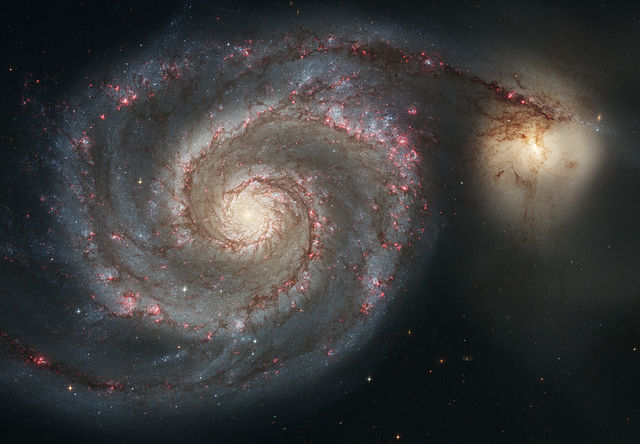*Image Credit: Wikimedia Commons Hunting through the night sky, French astronomer Charles Messier was frustrated on the evening of October 13, 1773. Desperate to find comets to track with his telescope, he had taken to compiling a list of other celestial objects to make sure he didn’t mistake them for the real thing — and on this particular night, he found the Whirlpool Galaxy, one of the most beautiful and famous of them all. Part of a two-galaxy system 23 million light years away, it has been a favorite for amateurs and professionals alike for more than 160 years. In his teens, Messier became enamored with the phenomena of the heavens after seeing a six-tailed comet work its way across the sky during 1744. Determined to join the lucky few who would peer into space in search of other such mysteries, he got a job with Joseph Nicolas Delisle, chief astronomer for the French Navy, at the age of 21. Following his master’s lead, he eventually began taking copious notes about his observations. By 1771, however, he had become annoyed. Though a respected member of the scientific societies of the age from his perch at the Hotel de Cluny in Paris, he found it difficult to distinguish comets from other objects filling his telescope. Hoping to avoid mistakes, he began organizing a list of unknowns that did not fit the bill. Notating them meticulously, he published a catalog of “Messier objects,” each with an assigned number. His first volume featured M1 to M45, but he would be credited with 110 discoveries in all after others pored over his scribblings in the years after his death. (And, fulfilling his dreams, Messier had located 13 comets.) October 13, 1773 would mark the discovery of M51. Bright and stationary in the sky above France, it seemed obviously not a comet. It would take another seven decades for someone to realize exactly what Messier had found. Since most of Messier’s objects are relatively easy to see with basic equipment, his catalogs became popular for stargazers. (In some cases, just a strong pair of binoculars is enough to visualize the different items.) When William Parsons, Lord Rosse, peered up at M51 with a far more powerful telescope in 1845, he grasped the enormity of what the Frenchman had seen on that evening: : the first spiral galaxy ever discovered. Mesmerized by the shape, Parsons named it the Whirlpool Galaxy. Situated in the Canes Venatici constellation, the Whirlpool Galaxy is estimated to be 43,000 light years across. Its contours have been shaped by the nearby NGC 5195 galaxy, a companion that has passed through and gone back, pulling and twisting its mate in a complex cosmic dance. A massive image of the pair formed by images taken by the Hubble Telescope and fitted together, released to the world in early 2005 and featured here, promises to leave mouths agape for generations to come. Also On This Day: 1307 – Knights Templar across France are arrested and tortured by agents of King Phillip IV, giving rise to the concept of Friday the 13th 1792 – The cornerstone of the Executive Mansion is laid in Washington, DC — it would be referred to as the White House starting in 1818 1917 – The “Miracle of the Sun” occurs in front of 70,000 witnesses in Fatima, Portugal 1983 – Ameritech Mobile Communications launches the first cellular phone network in the United States in Chicago 2010 – All 33 workers buried in the Copiapo mine return to the surface after surviving 69 days underground
October 13 1773 CE – Charles Messier Discovers the Whirlpool Galaxy
*Image Credit: Wikimedia Commons Hunting through the night sky, French astronomer Charles Messier was frustrated on the evening of October 13, 1773. Desperate to find comets to track with his…
424
